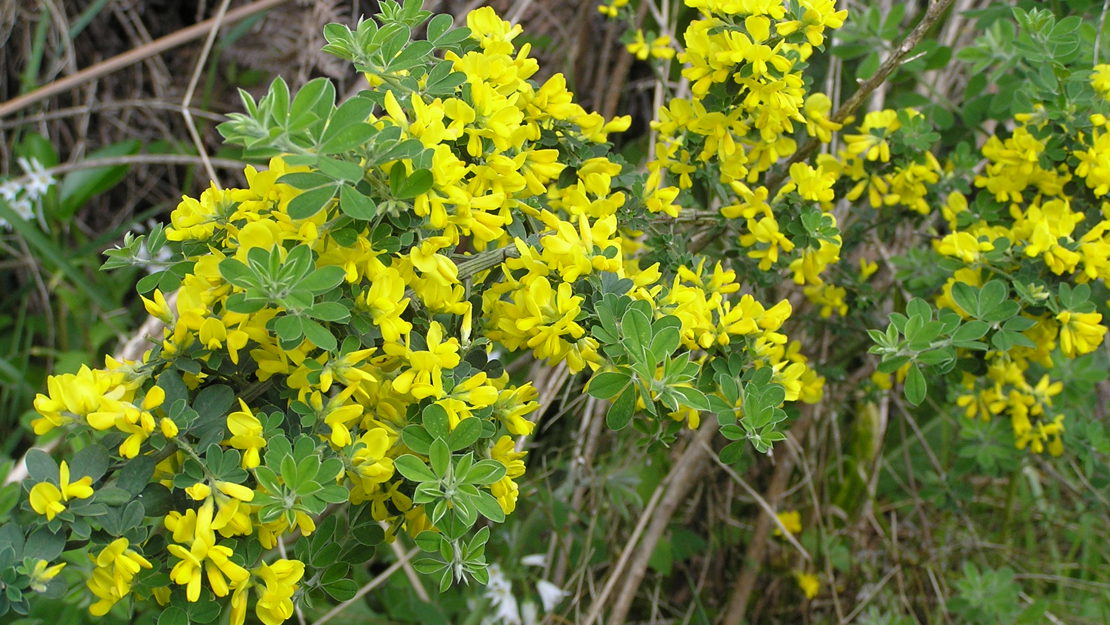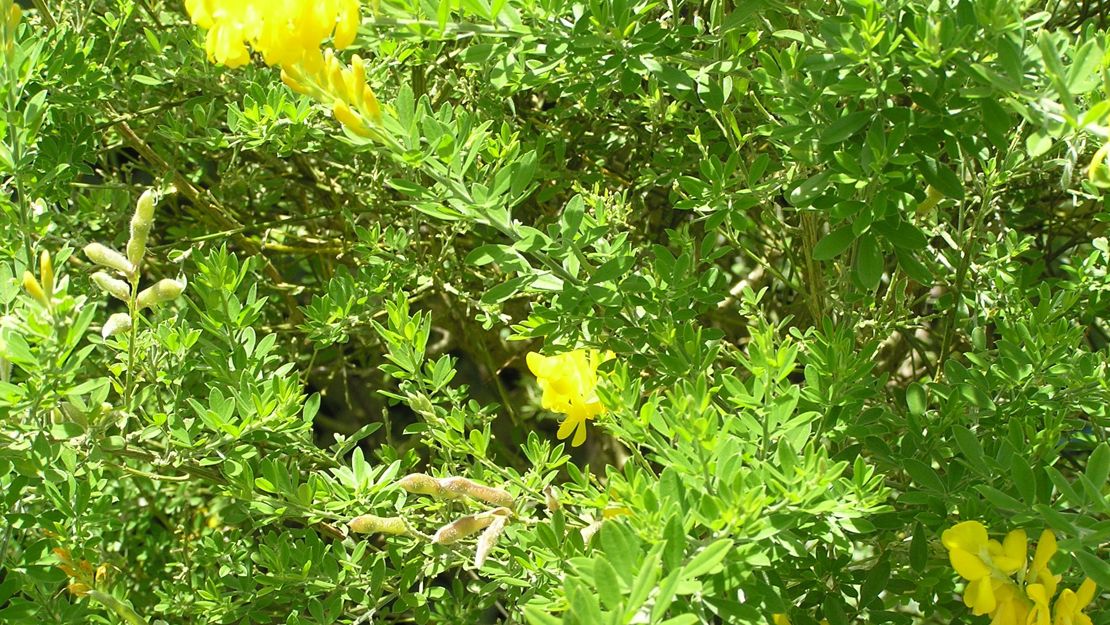Genista monspessulana syn. Teline monspessulana
Montpellier broom
Family: Fabaceae
Origin: Europe

Regional Pest Management Plan (RPMP) status
- Whole region — Sustained control
- Hauraki Gulf Controlled Area Notice pest
General description
Erect, multi-stemmed, evergreen, perennial shrub < 3 m tall. Stems are ridged, green and hairy when young. Leaves are trifoliate, narrow, oval and hairy. Flowers are yellow, pea-like and borne in clusters in May – November. Seed pods are brown/black and hairy.
What you need to know
To help protect our environment:
- You must not breed, distribute, release or sell Montpellier broom within the Auckland region.
- You must not plant Montpellier broom within the Auckland region, unless you are transferring an existing plant on your land to another location within the boundaries of the same property.
- You must destroy any Montpellier broom on land that you occupy if it has been planted in breach of the above rules and you are directed to do so by an authorised person.
Habitats
Grasslands, shrublands, open forest, forest margins, riparian areas, disturbed areas, roadsides, pastures, plantations, wastelands.
Dispersal
Seeds dispersed by explosive dehiscence and contaminated soil on animals. Human-mediated dispersal through dumping of garden waste and contamination of machinery and vehicles.
Impact on environment
Forms dense thickets, outcompeting native vegetation and altering species composition. Facilitates invasive animals and weeds. Nitrogen fixer. Reduces pasture grazing capacity and impedes stock movement. Poisonous to stock. Reduces plantation productivity.
Control
Site Management
Minimise creating soil disturbance where seeds can germinate and re-establish. Follow up treated areas 3 times per year. Encourage natural regeneration of native plants or replant treated areas where possible after 2-3 treatments to establish dense ground cover and minimise reinvasion.
Recommended approaches
Physical control
Method: Dig out.
Plant parts requiring disposal: Seeds.
Disposal options: Remove to greenwaste or landfill if practical.
Biocontrol
Biocontrol is currently not available for this species.
Community agrichemical control recommendations
No qualifications: Cut stump and paste freshly cut base of stems with metsulfuron gel.
Basic Growsafe certified: Cut stump and spray freshly cut base with 5g metsulfuron-methyl per 1 L of water.
Caution: When using any herbicide or pesticide please read the label thoroughly to ensure that all instructions and safety requirements are followed.




